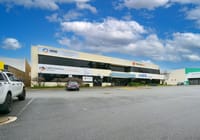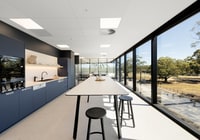
How golf courses are becoming the centrepiece of housing estate designs
How hard can it be for a developer to take a swing at creating a new golf course, when compared to the complexities of constructing more regular forms of commercial real estate, like offices, retail and industrial buildings?
The director of Capital Corporation now knows, and says it’s much, much trickier. “In some respects, it’s like any civil engineering project, shaping the earth and creating irrigation and drainage, which might not be as hard as some other commercial or residential projects,” said Jim Hunter.
“But then there are a number of other much more complicating factors, making it more like a Rubik’s Cube. The biggest of these is that operational performance depends on the weather, which you can’t possibly control. If you have torrential rain, then the course can be damaged for weeks or months at a time. Imagine if Coca-Cola was told they couldn’t sell for one month of every year!”
Australia’s next upcoming 18-hole championship golf course is in the NSW Hunter Valley, where $50 million has been poured into creating the course, as well as a 1200-square-metre clubhouse to go with it.
Masterminded by Capital Corporation, it’s the lynchpin of a $1 billion, 240-hectare new residential golfing community, Lovedale Farm, near Cessnock, which will comprise 500 residential lots, a 300-room resort and day spa, a dining precinct and shops, as well as the tees, fairways and greens.
It will join Greg Norman’s The Vintage and Cypress Lakes as the region’s third championship golf course, with the hope that it will help brand the area as a global golfing mecca.
A 20-year odyssey by Hunter – whose company has delivered around 2000 apartments across Sydney, like Norwest, Woolooware and Bondi Junction – it’s become a massive labour of love.
Years have been spent researching different golf courses around the world, speaking with dozens of private golf course owners, studying how they’ve become operationally successful, and closely examining costs and potential revenue. The company has also been working closely with club and industry advisory Jeff Blunden for the past five years.
“It is such a complex project to undertake, as there are always so many moving parts,” Blunden said. “You have the engineering, the flood management, the water management, the ecology, the traffic and working out which highlights of the property can be utilised for golf and how that might work with the real estate element.
“And you have to work out the priorities – is it good real estate or good golf? The challenge is to deliver on both counts, and make sure the front yard mirrors the backyard and that decisions you make in 2012 at the start of the project still hold up – or can be changed to suit – in 2026.”
Certainly, Hunter has drawn in some quality talent for the scheme. In addition to Blunden, he’s engaged with Golf NSW. He has had the master plan developed by award-winning architects Hachem following an Australia-wide design competition, and the golf course designed by renowned golf architect Darius Oliver. He’s the talent behind iconic golf courses, Cape Wickham Links on Tasmania’s King Island and The Farm at The Hills in New Zealand’s Queenstown.
More than 50 per cent of Lovedale Farm will be given over to the golf course, bushland, parks and water features, with many of the site’s established trees retained, and the planting of 2000 more.
In addition, the golf course will be expensively sand-capped to improve drainage, firmness and playability.
“The way we think of the golf course is like a flywheel, with many things hanging off of that,” said Hunter, who describes himself as a bad golfer, but who hopes to play more on the course’s completion. “It drives residential sales, and the better quality it is, the better it can support and drive more expensive real estate. It will also then be a driver for the five-star luxury resort and attract more club members to play more often.
“The golf course is also the lynchpin of the conference business with corporate conferences, which will also work with the wellness centre and the beautiful food and beverage side. The combination of it all is a lot more than its individual parts, with an excellent golf course meaning people will come back to play golf time and time again.”
The first stage release of 200 homes has already seen 70 per cent sold, with a combined value of $55 million, to keen golfers, upgraders and tree-changers. The planned clubhouse will include facilities for both golfers and residents.
It’s coming at a time when golf has undergone a surge in popularity, with 3.8 million Australians playing golf in 2023-24, according to Golf Australia, representing a 9 per cent year-on-year increase.
Despite this, a number of residential golf courses around Australia have previously failed, as it fell to the owners of the real estate to pay for upkeep of the course and run the club. Lovedale will, however, be retained and run by the developer, with most of the funds coming from membership and fees.
The property owners, who will be offered waived joining fees and reduced green fees as part of their ownership privileges, will pay only a nominal amount as part of their strata levies for small common property areas.
Construction will begin on the golf course in March 2026, with work starting on the first 200 homes and the clubhouse around the same time.










